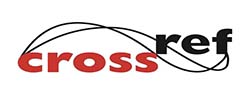Author: Muh.Hatta, Nur Asia Umar, Sri Mulyani, Ida Suryani
![]() DOI: 10.22161/ijeab.4449
DOI: 10.22161/ijeab.4449
Keyword: Food Habits, Snakehead fish, Goldfish, Snakeskin fish, Javabarb fish, Tilapia, Damselfish, Tempe lake.
Abstract: This study aims to analyze and classify the food habits of fish with economic value in the waters of Lake Tempe in several different types of fish. The research was conducted in February, March, April, and June 2017 at Tempe lake in South Sulawesi. The research method used is the method of field observation and observation in laboratory. Several samples of fish species observed were 25 Snakeheadfish (Channa striatus), 30 Goldfish (Cyprinus carprio), 40 Snakeskin fish (Trichogaster pectoralis), 40 Javabarb fish (Barbonymus gonionotus), 40 As many as 40 Tilapia (Oreochromis niloticus), and 40 Damselfish (Anabas testudineus). The types of organisms found in the fish's gastric are then identified by using the 1979 Yamaji plankton identification book, and then calculating the frequency of occurrence to classify the food habits of fish. The results showed that Snakeskin fish and tilapia fish were classified as herbivore fish based on gastric contents analysis found in phytoplankton, zooplankton, detritus, aquatic plants, insects, other benthic invertebrates and worms. Goldfish and Damselfish are classified as omnivoro fish based on gastric contents analysis obtained by water plants, phytoplankton, zooplankton, zoobentos, detritus, insects, molluscs, worms, eggs or fish larvae and other invertebrate larvae. While Javabarb fish are classified as planktivor fish based on gastric contents analysis found phytoplankton, zooplankton, aquatic plants, insects, and other invertebrate larvae. Fish Snakehead fish classified as carnivore fish based on gastric contents analysis found zoobenthos, fish, shrimp, crustaceans, worms, frogs, and nekton. Based on the measurement of water quality parameters shows that the carrying capacity of the environment as a habitat is still very supportive for the growth of fish in the waters of Tempe lake.
| Total View: 1495 | Downloads: 697 | Page No: 1217-1222 |
Cite this Article:
MLA
Muh.Hatta, Nur Asia Umar, Sri Mulyani, Ida Suryani, P.(2019).Study Food Habits of Fishes in Tempe Lake. International Journal of Environment Agriculture and Biotechnology(ISSN: 2456-1878).4(4), 1217-1222.10.22161/ijeab.4449
Muh.Hatta, Nur Asia Umar, Sri Mulyani, Ida Suryani, P.(2019).Study Food Habits of Fishes in Tempe Lake. International Journal of Environment Agriculture and Biotechnology(ISSN: 2456-1878).4(4), pp.1217-1222.
Muh.Hatta, Nur Asia Umar, Sri Mulyani, Ida Suryani. 2019."Study Food Habits of Fishes in Tempe Lake". International Journal of Environment Agriculture and Biotechnology(ISSN: 2456-1878).4(4):1217-1222.Doi:10.22161/ijeab.4449
Muh.Hatta, Nur Asia Umar, Sri Mulyani, Ida Suryani."Study Food Habits of Fishes in Tempe Lake", International Journal of Environment Agriculture and Biotechnology,vol.4,no. 4, pp.1217-1222,2019.
@article { muh.hatta2019study,
title={Study Food Habits of Fishes in Tempe Lake},
author={Muh.Hatta, Nur Asia Umar, Sri Mulyani, Ida Suryani , R},
journal={International Journal of Environment Agriculture and Biotechnology},
volume={4},
year= {2019} ,
}
























